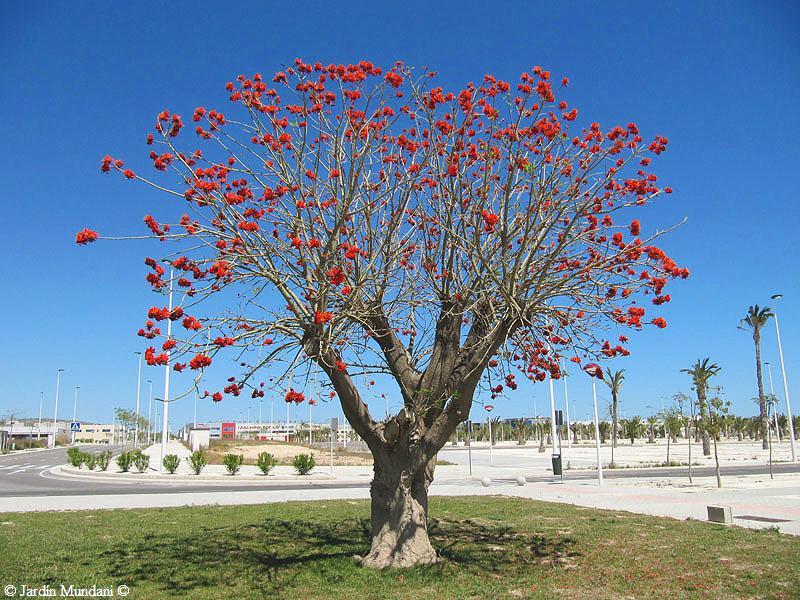The Arbol de Zompantle, also known as the Zompantle Tree, is a remarkable species celebrated for its unique features and cultural significance. Found primarily in the regions of Central America, this tree is not just a visual delight but also serves various ecological and practical purposes. Its striking appearance, combined with its resilience, makes it a fascinating subject of study for botanists and nature enthusiasts alike.
In addition to its aesthetic appeal, the Arbol de Zompantle has deep roots in local folklore and traditions. Many communities revere this tree for its medicinal properties, while others consider it a symbol of strength and endurance. Understanding the importance of the Zompantle Tree goes beyond mere observation; it invites us to appreciate the intricate relationship between nature and culture.
As we delve deeper into the characteristics, uses, and significance of the Arbol de Zompantle, we will uncover not only its ecological importance but also the stories that intertwine human life with this magnificent tree. Join us on this journey as we explore the wonders of the Arbol de Zompantle.
What is the Arbol de Zompantle?
The Arbol de Zompantle, scientifically known as *Lysiloma acapulcense*, is a deciduous tree native to tropical and subtropical regions. Characterized by its broad canopy and distinctive fern-like leaves, it can reach heights of up to 30 feet. The tree produces small yellow flowers that add to its visual appeal, followed by elongated pods containing seeds. The bark is rough and dark, providing a stark contrast to the lush green foliage.
Where Does the Arbol de Zompantle Grow?
This remarkable tree thrives in a variety of environments ranging from dry forests to open grasslands. Typically found in countries like Mexico, Guatemala, and Honduras, the Arbol de Zompantle prefers well-drained soils and can tolerate periods of drought, making it an ideal choice for arid landscapes.
Why is the Arbol de Zompantle Important for the Ecosystem?
The Arbol de Zompantle plays a crucial role in its ecosystem. Here are some key reasons why it is important:
- Habitat Provider: The tree offers shelter and food for various wildlife species, including birds and insects.
- Soil Enrichment: Its fallen leaves decompose and enrich the soil, promoting healthy growth of surrounding vegetation.
- Carbon Sequestration: Like other trees, it captures carbon dioxide, helping to mitigate climate change.
What Cultural Significance Does the Arbol de Zompantle Hold?
In many cultures, the Arbol de Zompantle is viewed as a sacred tree. Traditional healers often utilize its bark and leaves for medicinal purposes, claiming it can treat ailments ranging from digestive issues to skin conditions. Furthermore, folklore often attributes spiritual significance to the tree, serving as a symbol of resilience and healing in local communities.
How is the Arbol de Zompantle Used in Modern Landscapes?
The Arbol de Zompantle has found its way into contemporary landscaping due to its attractive form and low maintenance requirements. Here are some ways it is commonly used:
- Shade Tree: Its wide canopy provides excellent shade, making it popular in parks and residential areas.
- Windbreak: Planting several Zompantle trees can create a natural barrier against wind.
- Ornamental Feature: Its unique foliage and flowers add aesthetic value to gardens and public spaces.
What Are the Challenges Facing the Arbol de Zompantle?
Despite its hardiness, the Arbol de Zompantle faces several challenges:
- Deforestation: The tree is often cut down for agriculture and urban development.
- Climate Change: Shifts in climate patterns may affect its growth and distribution.
- Pests and Diseases: Like other trees, it is susceptible to various pests and diseases that threaten its survival.
How Can We Protect the Arbol de Zompantle?
Conservation efforts are essential to ensure the survival of the Arbol de Zompantle. Here are a few strategies:
- Reforestation: Planting new trees in areas where they have been cut down can help restore populations.
- Public Awareness: Educating local communities about the tree's ecological and cultural significance can foster a sense of stewardship.
- Legal Protection: Implementing laws to protect native species from deforestation and habitat destruction is crucial.
What Future Does the Arbol de Zompantle Hold?
The future of the Arbol de Zompantle depends largely on our collective actions. As awareness grows regarding the importance of biodiversity, there is hope that more people will recognize the value of preserving such remarkable species. By protecting the Arbol de Zompantle, we not only safeguard a unique tree but also contribute to the health and diversity of our ecosystems.
In conclusion, the Arbol de Zompantle is a fascinating tree that embodies both ecological importance and cultural richness. By understanding its roles and challenges, we can better appreciate the need for conservation and sustainable practices. The journey of the Arbol de Zompantle is one of resilience, beauty, and interconnectedness with the world around us.


